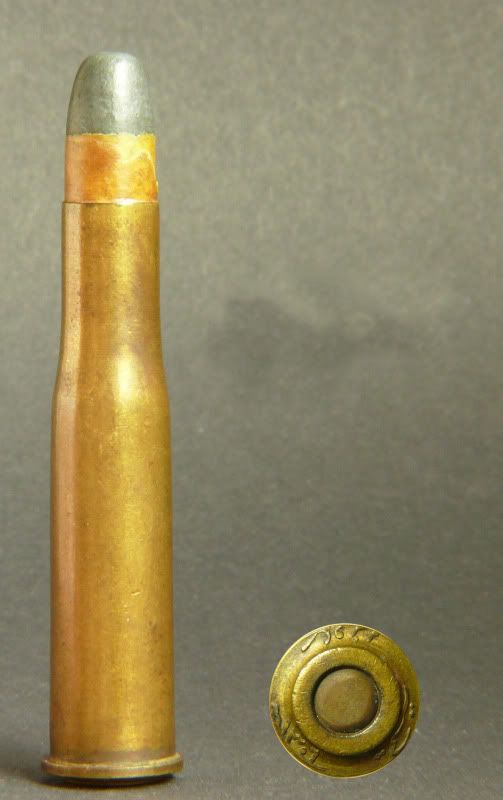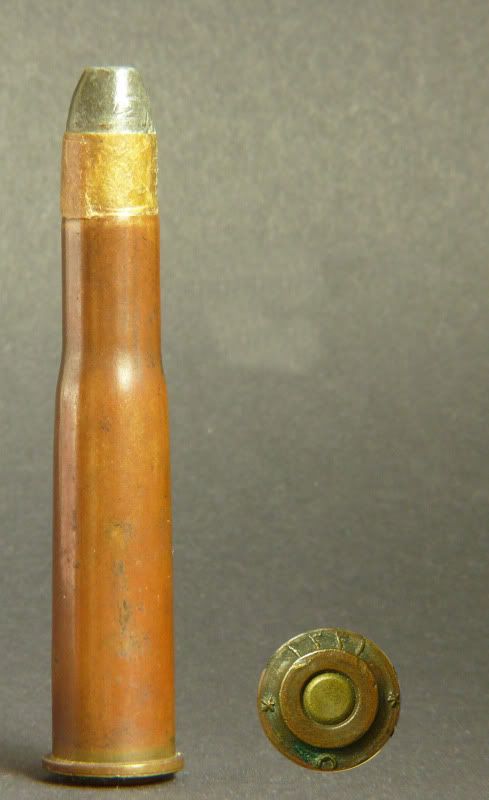Who let you in? I don't know, the people they allow these days.......:tinysmile_fatgrin_t
Welcome my friend, Happy New year to you!
Years ago, when I was helping Ken Elks with his booklet on ammunition with Arabic markings, we looked at dozens of early Turkish Mauser cartridges.
The 9.5mm Turkish Mauser rounds were dated from 1887 when the rifle was adopted and all seem to be made by DWM. The headstamp includes the word "RZWAM" which read right to left is the phonetic for Mauser, and the date. An example from 1306 (c.1890) is shown in the first picture.
When Turkey changed the remainder of the rifle and ammunition contract to the 7.65mm in 1890 DWM supplied the Model 1890 cartridge with a round nosed CN clad steel envelope and headstamped with "Little Mauser" and the date. An example from 1320 (c.1904) is in the second picture.
Around 1908 it seems the Turks started manufacture of their own ammunition in both 9.5mm and 7.65mm. These were headstamped with the date at the top and a star between two crescents at 6 o'clock. An example from 1324 (c.1908) is shown in the third picture. 9.5mm examples with the same headstamp are known from 1327 to 1331 (c.1911 to 1915)
In 1913 the more familiar spitzer bulleted examples appear, a typical headstamp shown in Picture 4. The top position now says "Mauser", the Turkish crescent is at 9 o'clock, the date at 6 o'clock and another symbol at 3 o'clock. There are several different Arabic symbols that appear here, representing "Y", "M" and "A". The meaning is uncertain, but is probably a reference to the loading facility or productin line. I am sure these are indiginous Turkish production, almost certainly on Germen machinery.
It has been claimed that these are a DWM contract. but that seems highly unlikely because it means there was no Turkish production in WWI and also tha dates on these rounds run up to 1923, and Germany was forbidden to manufacture ammunition after 1918.
One other fact that supports Turkey entering production early. Greenwood & Batley certainly supplied either cartridge making machinery or possibly loaded rounds to the Turks around the turn of the century. There exist .303 Mark V (hollow point) rounds headstamped not with the usual British military three position headstamp of "GB C V" but with a four position headstamp of "GB C V Turkish Crescent". Whether these rounds were for proof of machinery before it was shipped (as was often done) or sample rounds when bidding for a Turkish contract I do not know, but they would date from around 1900. Presumably they used .303 dies as this was what they were producing at the time on contract to the War Office.
If this is so, then it could easily have been a period of a few years between GB supplying demonstration cartridges, winning the contract, making the machinery, shipping it to Turkey and setting it up before the first rounds entered service in 1908 (if indeed that is the first year)
All a bit circumstantial I know but I hope it helps.
BTW, all pictures are from Ken's booklet.
Regards
TonyE






